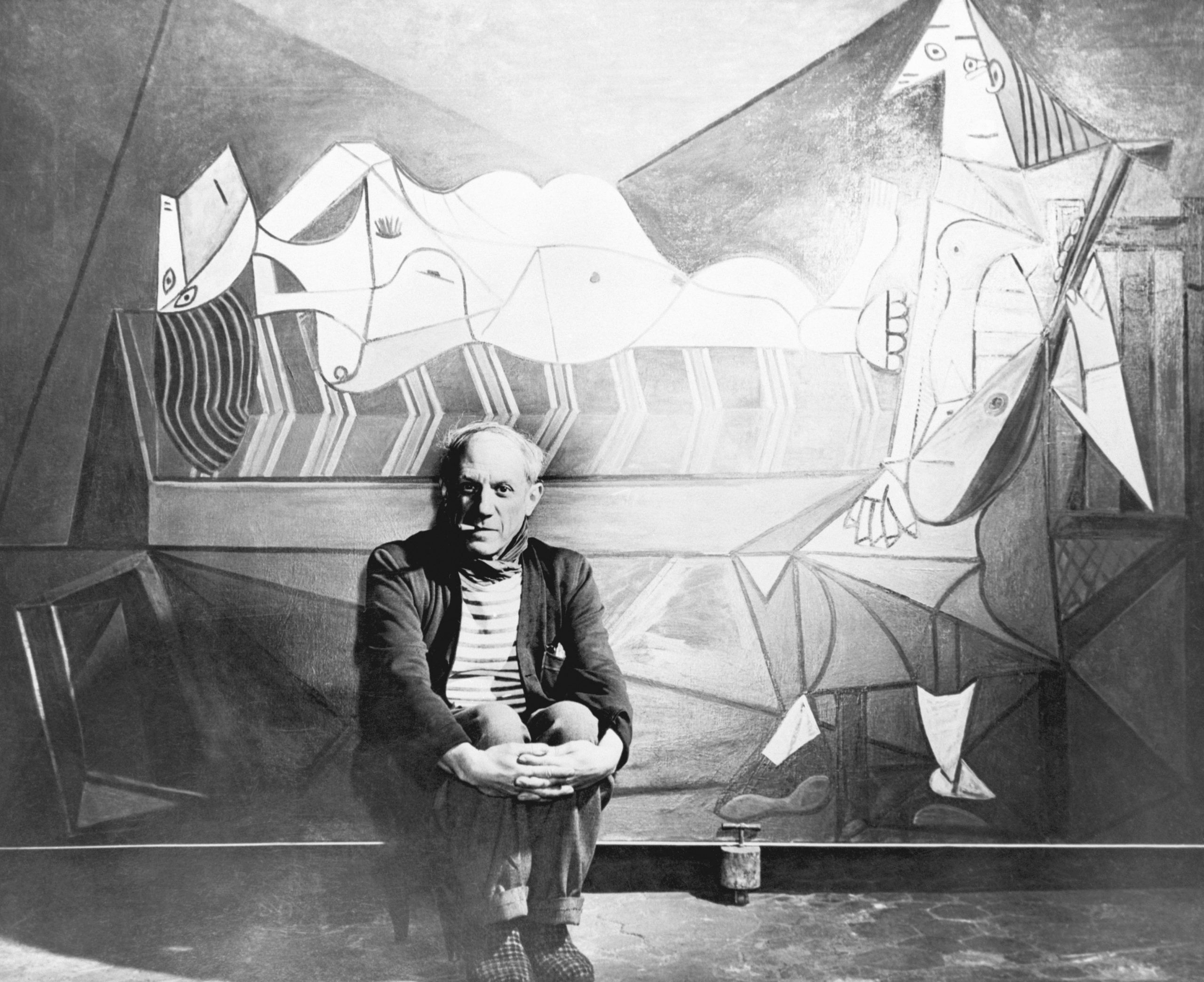
As far as artistic collaborations go, the 1920 debut of Pulcinella was one for the ages. Ballet impresario Sergei Diaghilev pulled the strings with Léonide Massine providing choreography, Igor Stravinsky the music, and Pablo Picasso the costumes and sets.
For Picasso and Stravinsky, it sparked a friendship that lasted a lifetime. Almost exact contemporaries, both had sought out Paris’s febrile energy and were fast becoming master craftsmen who shared an affinity for experimenting with style and form. In later years, they wrote letters to one another, exchanging news, doodles, and musical riffs.
The Ballets Russes performing Pulcinella in 1924. Photo by Sasha Hulton/Getty Images.
One such notation, a fleeting clarinet concerto that Stravinsky titled Pour Pablo, will be brought to life as part of “Picasso Symphony,” a concert experience that tells the story of the artist’s life by pairing artwork with period music played by a live orchestra. When Pour Pablo arrives as a three-minute intermezzo, it’s accompanied by Picasso’s portraits featuring musical instruments.
“Picasso Symphony,” which will open at La Seine Musical in Paris in March 2025 ahead of an international tour is the brainchild of Jason Michael Paul, a producer and musical entrepreneur who has seen success producing video game concerts with titles such as Zelda and Final Fantasy.
Igor Stravinsky, Pour Pablo. Photo courtesy of JMP Entertainment.
The inspiration for his latest outing arrived from another project that has taken an iconic artist beyond the white walls of a museum: Immersive Van Gogh. Upon visiting it, Paul found the event offered audiences an immersive experience of light and sound, something he believed was replicable in a concert hall.
After negotiating the rights to the artwork with Succession Picasso, which manages the artist’s image rights, Paul worked with music director Kevin Zakresky to trace the contours of Picasso’s life chronologically through music. “There’s an emotional mirroring or matching of the music to the art’s mood,” Paul told me via email. “The aim was to create a cohesive and insightful journey through Picasso’s world.”
A musical work Picasso sent Stravinsky. Photo courtesy JMP Entertainment.
What this amounts to is somber cello playing to his Blue Period paintings or lively acoustic guitar for the early Spanish works. Elsewhere, atonal works accompany Picasso’s abstract experiments and neoclassical pieces tie in with the more traditional phases of his career. For good measure, Paul and Zakresky have included music by some of Picasso’s favorite composers, like Eric Satie (a close friend whom he painted), Gustave Holst, Benjamin Britten, and Sergei Prokofiev.
“Music was central to Picasso’s life, in Spain and in France, music was in the air,” Paul said. “Think of the cafes, the bars, the street performers. It was part of his daily existence and he painted musicians repeatedly and he also painted portraits of composers.”
Portrait of Stravinsky by Pablo Picasso (1917). Photo courtesy JMP Entertainment.
One of these portraits, naturally, is of Stravinsky. The composer sits in a chair that seems to bend around him, the lines are thin and exact, his gaze is fixed and expectant, as though searching for some brilliant idea in the far beyond.
“Picasso Symphony” debuts at La Seine Musicale, La Seine Musicale, Île Seguin, Boulogne-Billancourt, France, March 1, 2025, before traveling to the Will Rogers Memorial Auditorium, 3401 W Lancaster Ave, Fort Worth, Texas, on May 10, 2025.